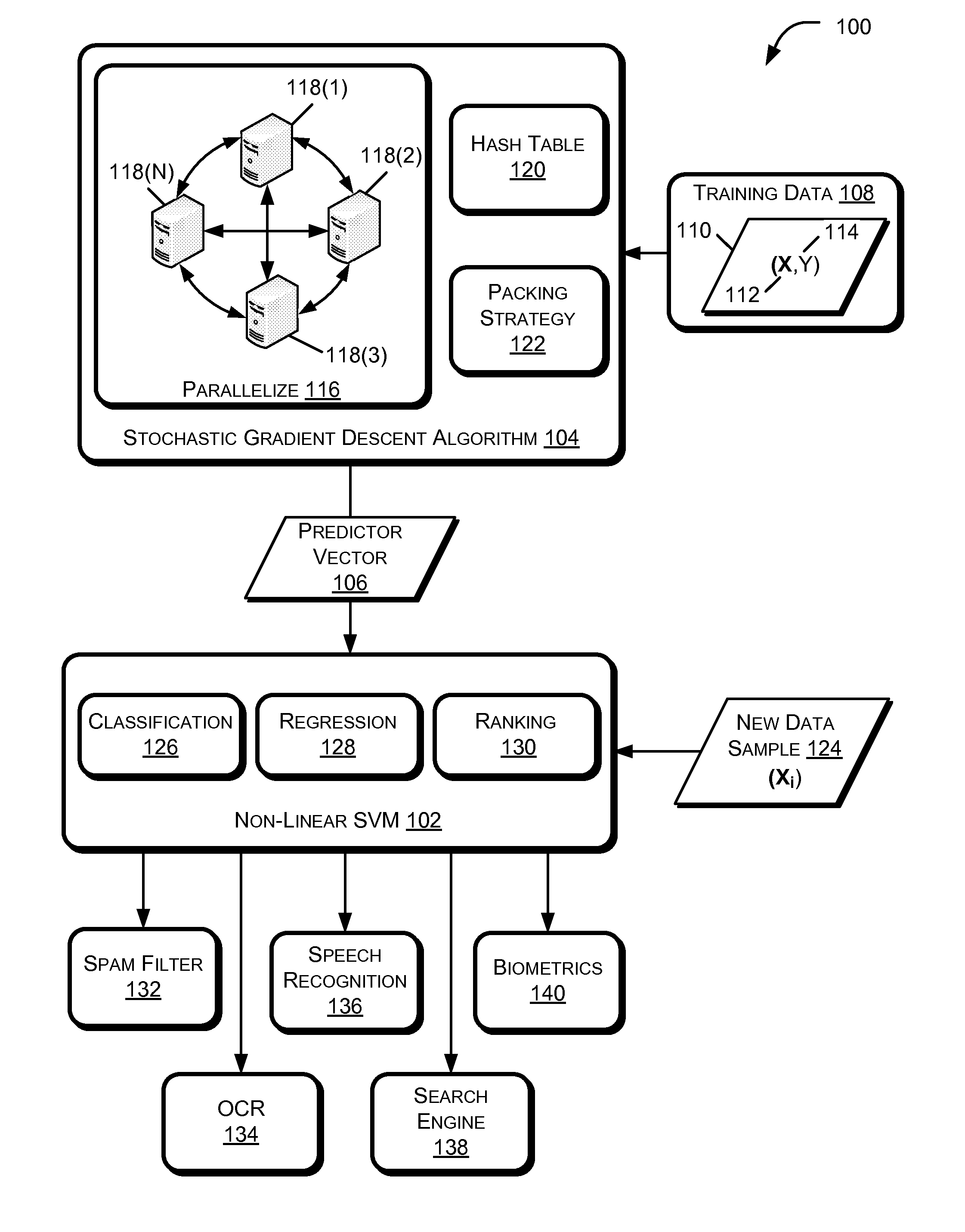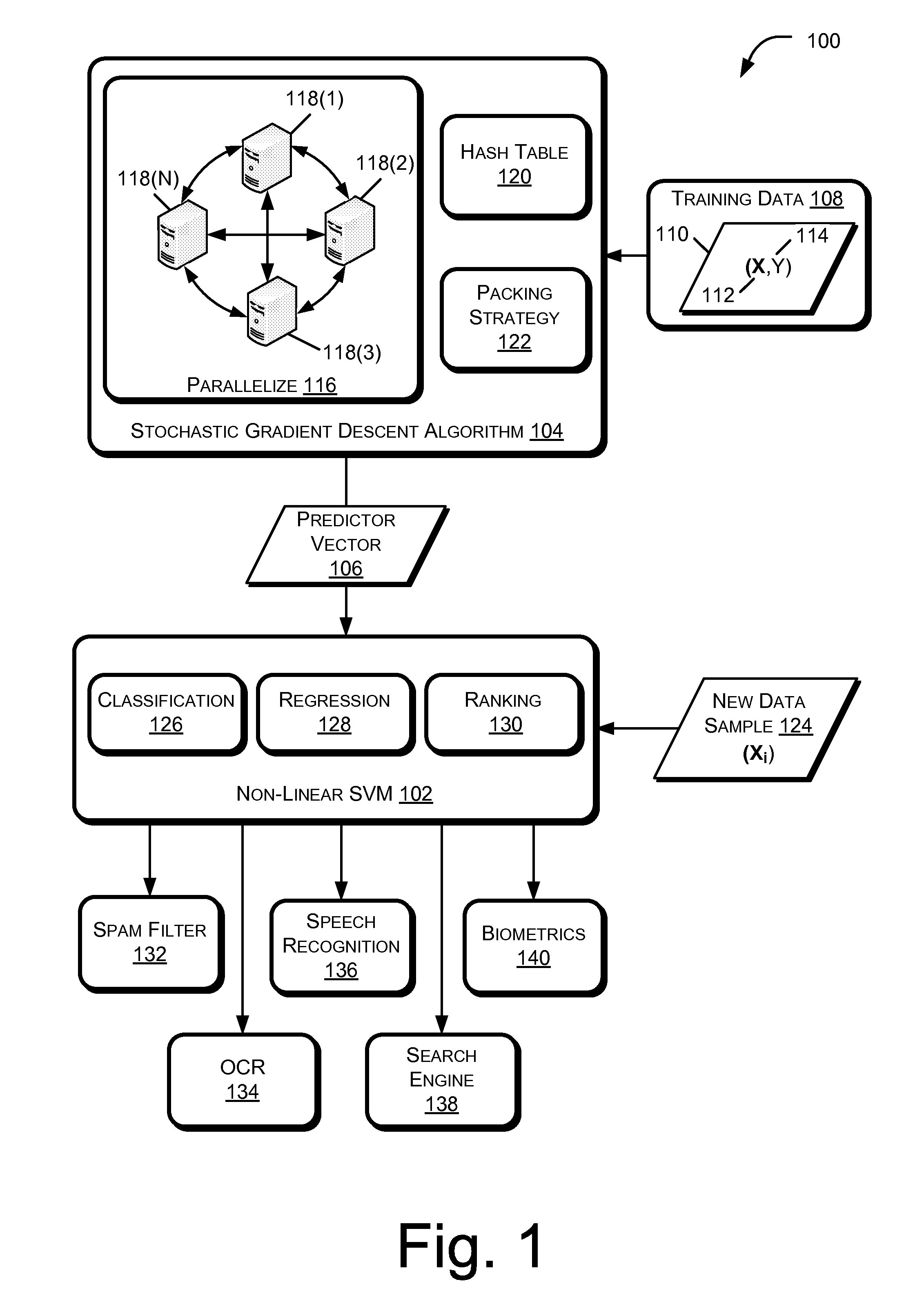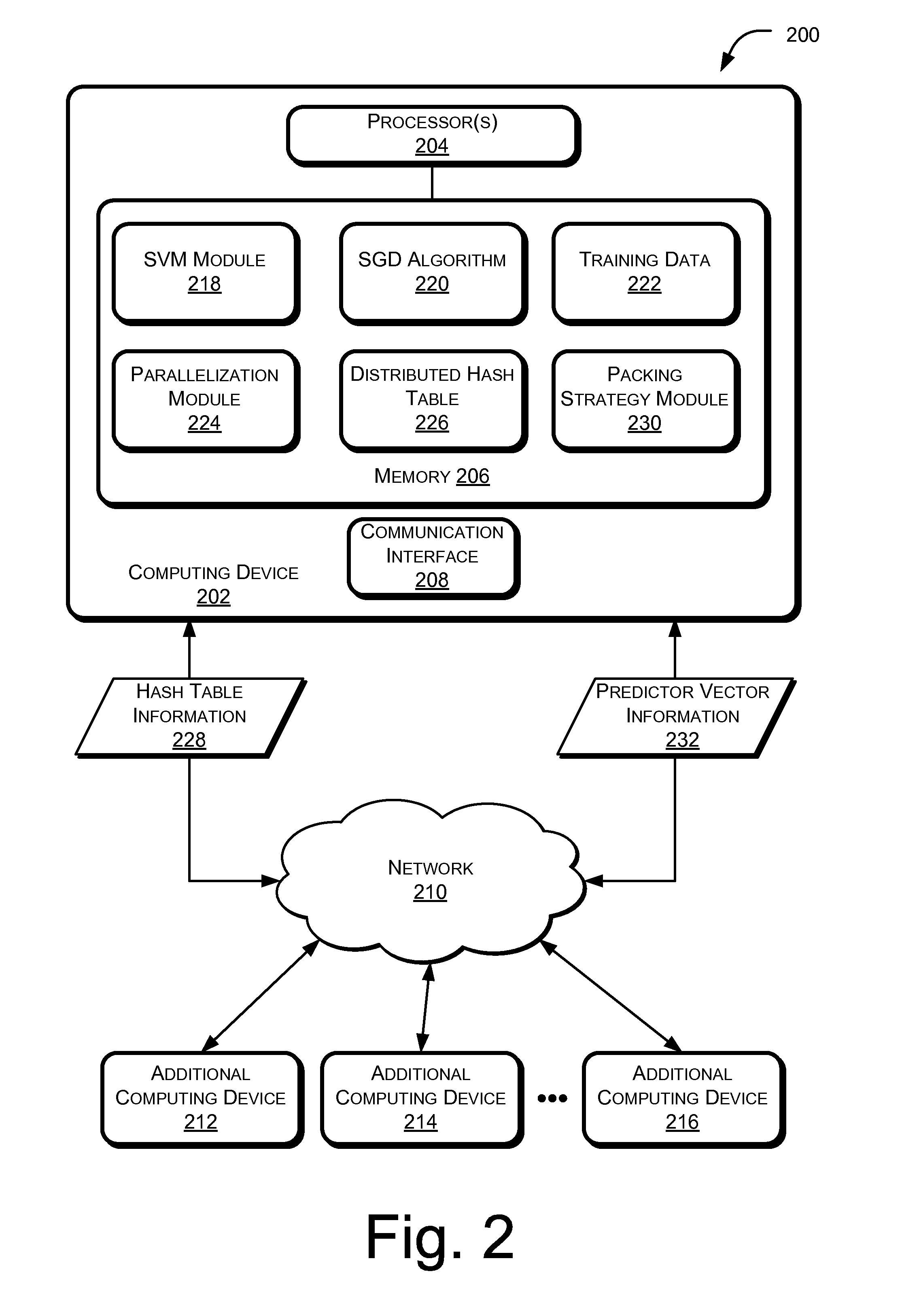Training SVMs with parallelized stochastic gradient descent
a technology of stochastic gradient descent and parallel training, applied in the field of machine learning methods, can solve the problems of algorithmic sacrifice of accuracy for speed, resource-intensive and time-consuming training of non-linear support vector machines,
- Summary
- Abstract
- Description
- Claims
- Application Information
AI Technical Summary
Benefits of technology
Problems solved by technology
Method used
Image
Examples
Embodiment Construction
[0018]FIG. 1 illustrates an example framework 100 for training a non-linear support vector machine (SVM) 102 using a parallelized stochastic gradient descent algorithm 104. The non-linear SVM 102 may also be referred to in this disclosure as a kernel SVM. The stochastic gradient descent algorithm 104 may be used to fit parameters of the primal objective function of the non-linear SVM 102. In particular, the stochastic gradient descent algorithm 104 may determine a predictor vector 106 for the primal objective function of the non-linear SVM 102.
[0019]The non-linear SVM 102 may be implemented using a set of training data 108 that includes a plurality of samples 110. Each sample 110 of the set of training data 108 may include an ordered key-value pair having a feature vector 112 as a key and a corresponding value 114. The stochastic gradient descent algorithm 104 may be executed over a number of iterations utilizing a respective training data sample 110 for each iteration to determine ...
PUM
 Login to View More
Login to View More Abstract
Description
Claims
Application Information
 Login to View More
Login to View More - R&D
- Intellectual Property
- Life Sciences
- Materials
- Tech Scout
- Unparalleled Data Quality
- Higher Quality Content
- 60% Fewer Hallucinations
Browse by: Latest US Patents, China's latest patents, Technical Efficacy Thesaurus, Application Domain, Technology Topic, Popular Technical Reports.
© 2025 PatSnap. All rights reserved.Legal|Privacy policy|Modern Slavery Act Transparency Statement|Sitemap|About US| Contact US: help@patsnap.com



